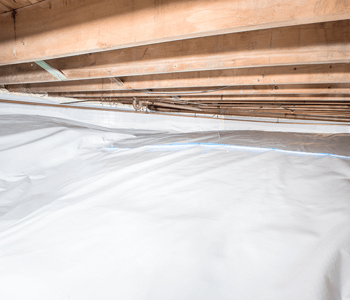
A new way to solve an old problem
More than 27 million homes in the U.S. have crawl spaces. That number grows every year, as 15 to 20 percent of new homes continue to be built over crawl spaces.
That's a lot of houses, most of which are probably suffering from a variety of problems.
They include excessive moisture and what comes with it: mold and mildew, wood rot, corrosion, poor indoor air quality, and insect and pest infestation. They also include excessive energy loss (especially where there are ducts in the crawl space), cold floors, high fuel bills, and greater wear and tear on HVAC equipment.
Most of these problems are due to one-size-fits-all building codes, cost-cutting construction practices, inadequate waterproofing, insufficient air sealing, and using the wrong type of insulation. Fortunately, building scientists have revised their thinking about crawl space design and have devised ways to eliminate or at least minimize the ills associated with crawl spaces. Codes are changing as well..
The closed-versus-vented question
Closed or "encapsulated" crawl spaces are now preferred to open, or vented, crawl spaces.
Closed crawl spaces are consistently better at controlling moisture that enters via the damp earth or from warm humid air that would otherwise infiltrate from the outdoors.
Tests done for the Environmental Protection Agency (EPA) by Advanced Energy have shown that closed crawl spaces maintain significantly lower levels of relative humidity (RH). In a multi-home test done in Baton Rouge, Louisiana, for example, the average relative humidity of closed crawl spaces barely exceeded 60 percent.
Meanwhile, vented crawl spaces in control homes had readings in excess of 80 percent. In a similar test in Flagstaff, Arizona - a colder, dryer climate - vented crawl spaces stayed below 70 percent RH, but sealed crawl spaces were less. They never exceeded 50 percent RH.
The winner: closed, encapsulated crawl spaces have lower relative humidity, which means less rot, better air quality and fewer pests.
Click here to find your local crawl space encapsulation specialist.
Article originally published on MyHomeScience.com



